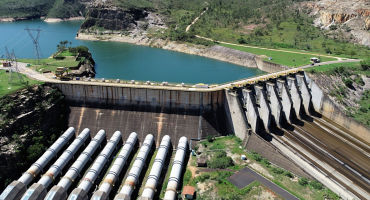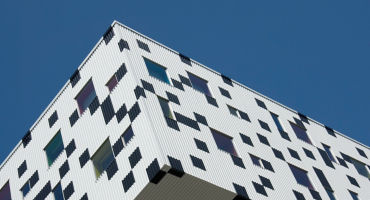- Director of Climate Research
Skip to main content
- Funds
- Insights
- Capabilities
- About Us
- My Account
The views expressed are those of the authors at the time of writing. Other teams may hold different views and make different investment decisions. The value of your investment may become worth more or less than at the time of original investment. While any third-party data used is considered reliable, its accuracy is not guaranteed. For professional, institutional, or accredited investors only.
As momentum behind decarbonization and net-zero objectives builds around the world, asset owners are increasingly engaged in addressing the investment implications of climate change. The focus thus far has largely been on implementation at the security- and manager-selection levels, but there is a growing recognition of the need to factor climate change into broader investment policy and asset allocation decisions.
Here, in collaboration with the Woodwell Climate Research Center, we’ve provided relevant climate research and investment insights designed to help Canadian investors navigate the potential impacts of climate change.
There has been a pronounced shift toward more extreme weather in Canada over the past decade or so. Consider Alberta, where 6 of Canada's 10 costliest natural disasters have occurred. Two of the worst storms in Alberta’s recorded history have taken place since 2013, both linked to climate change and centered on Calgary: flash flooding on June 19, 2013 and a hailstorm on June 13, 2020 that caused CAD$1.25 billion of property damage—the fourth costliest natural disaster in Canada since records began. And consider the recent record flooding in Vancouver that took out the main highway.
Looking at Canada as a whole, climate change has caused the country to warm at nearly twice the global average rate. (Parts of western and northern Arctic Canada have warmed at 4x that rate.) This warming has led to more frost-free days and longer growing seasons in Canada, trends that are expected to persist. However, it also implies that the length and severity of the wildfire season have increased and will continue to do so. Drought and heat waves will likely also follow recent patterns seen in Canada by becoming longer and more severe over time.
Canada will also continue to feel ongoing climate change impacts from the US, where the recent severe wildfire seasons in California pushed smoke (and resulting toxic air quality) into British Columbia and Alberta.
In collaboration with our partners at Woodwell Climate Research Center, we studied multiple aspects of physical climate risk in Canada out to mid-century. We examine several climate (and climate-related) perils: agricultural yield, heat extremes, permafrost loss, extreme precipitation (Figure 1), flooding, sea level rise, biodiversity loss, drought, and wildfire. We also examine the potential of renewables. Our focus out to mid-century requires the use of global climate models (or Earth system models). Here we use a fossil fuel intensive scenario that simulates historical (2005 – 2020) total carbon dioxide emissions within 1%. This trajectory is also the best match out to mid-century as compared to the World Energy Outlook forward-looking scenarios of climate policies currently in place.

Here are some key findings from our latest joint climate research with Woodwell:
A logical next question here is: How do we seek to integrate climate change research findings (like those presented above) into our capital market assumptions and asset allocation approaches?
In fact, our Investment Strategy team has been generating robust capital market assumptions (CMAs) – including various asset return, risk, and correlation metrics, for many years now. These CMAs play an important role in many of our firm’s asset allocation processes and are subject to ongoing analysis and enhancements as new research findings come to light. We have a basic but important philosophical starting point for this work: Simply put, we believe climate change impacts investment outcomes. It affects macro-level variables, such as economic growth; company-specific dynamics, such as corporate costs and future activities; and decisions around industry regulations and fiscal policy. These, in turn, all impact asset prices to one degree or another.
Our framework for thinking about the climate inputs that should be integrated into the CMA process begins with attempting to quantify and incorporate both transition and physical climate risks (Figure 2). To learn more, please see our Investment Strategy team’s January 2022 white paper: Integrating climate change into capital market assumptions: Our approach and findings.
Looking ahead, climate change and investing remain top priorities for our firm in 2022 and beyond, with particular focus on three key areas:
To learn more, please see our 2022 Climate Change Investing Outlook, featuring actionable insights from our Investment Strategy and Climate Research teams.
Drawing on Woodwell’s climate projections and our proprietary geospatial mapping tool, we evaluate the potential impact of key climate variables including heat, drought, water scarcity, wildfire, floods, hurricanes, and sea-level rise for each known company address. These climate projections are subject to many assumptions as specified by the climate scientists at Woodwell.
Projections vary over different time periods and are subject to change. Materiality assessments are communicated via Low/No risk, Potential risk, and Material risk (defined below) and reflect potential physical risk identified by Wellington’s Climate Research Team as of a specific time. If the company’s disclosure of location data is more general than provincial or state level and we are unable to find additional information from supplementary sources, it would be insufficient to produce a rating based on our criteria. In this case, we would look at qualitative factors to assign a rating and flag the rationale with the statement (Qualitative assessment applied due to insufficient location data). Importantly, these ratings do not reflect our assessment of how company management teams plan to manage these risks over time. Ratings are not intended to signal buy or sell investment decisions. Ratings should only be interpreted as a potential input into an investment team’s research mosaic. Other investment teams at Wellington Management may disagree with the Climate Research Team’s materiality assessment.
Material risk identified: Typically defined as a company with greater than 10% of its key locations at risk, or greater than 5% of revenue at risk from climate-related events.
Potential risk identified: Typically defined as a company with some level of climate risk to its key inputs or critical facilities (1% – 10%, or below 5% of revenue at risk), or a company with more than a 30% net property, plants, and equipment (PP&E) to total assets ratio.
Low/No risk identified: Typically defined as a company with little to no level of climate risk due to either its locations, diversification, the nature of its business, or the industry/sector in which it operates.


Impact investing in emerging markets: Growing opportunities, shifting challenges
Continue readingWhy an impact lens is an important tool in the fixed income investor's arsenal
Continue readingPicking the right building blocks for a climate-aware portfolio
Continue readingURL References
Related Insights
Stay up to date with the latest market insights and our point of view.

Cybersecurity for private companies
We highlight today's rising cybersecurity risks, explore how they impact private companies, discuss key regulatory considerations, and share best practices for companies facing these threats.

2023 Climate Report

2023 Sustainability Report
We appreciate the opportunity to share our approach to advancing sustainable practices across our investment, client, and infrastructure platforms.

Impact investing in emerging markets: Growing opportunities, shifting challenges
Members of our impact bond team discuss their evolving emerging markets opportunity set and the importance of a bottom-up approach to value creation.

Why an impact lens is an important tool in the fixed income investor's arsenal
Campe Goodman, Will Prentis and Oyin Oduya discuss how an impact lens can be an important tool in the fixed income investor's arsenal.

Picking the right building blocks for a climate-aware portfolio
For asset owners integrating climate change into their multi-asset portfolios, members of our Investment Strategy & Solutions Group offer five important insights.

Thematic investing focus: the next generation of energy
The decarbonisation process represents the biggest capital cycle in our lifetime. As we develop the next generation of energy, Keith White, Daouii Abouchere and Megan Galligan examine how thematic investors can make the most of this structural opportunity.

Thematic investing focus: evolving the current generation of energy
The energy transition is taking place amid a greater focus on energy security and affordability. What could this mean for the role of traditional energy companies, ask Keith White Daouii Abouchere and Megan Galligan.

A blueprint for building climate-aware multi-asset portfolios
Members of our Investment Strategy & Solutions Group take a deep dive on the issues asset owners should consider when choosing climate-aware portfolio building blocks, from the evolving opportunity set to the active/passive decision.

Will proposed corporate governance reforms help to narrow the “Korea discount”?
Could South Korea's Corporate Value-up Program help to narrow the so-called “Korea discount” and build on the momentum gathering pace elsewhere across Asia to improve corporate governance and shareholder returns?

Evaluating labelled bonds: a robust framework is key
Fixed Income Portfolio Manager Campe Goodman and Investment Specialist Will Prentis explain why they believe a robust framework for analysing labelled, or sustainable, debt can help to generate real-world impact.
URL References
Related Insights